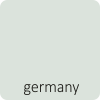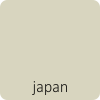The building sector in Europe Union is addressed by several European directives that need to be taken into account are designed to enhance energy efficiency and renewable energy in the building sector.
Renewable Energy Directive (RED, 2009/28/EC)
Obliges member states to set up sector specific targets for renewable heating and cooling. The policies must be applicable to new buildings and existing buildings with planned major renovations. Progress is tracked through National Renewable Energy Action Plans (NREAPs)
Energy Service Directive (ESD, 2006/32/EC)
The ESD includes measures to improve energy services and energy efficiency cost effectively. Member States are obliged to adopt a national indicative energy savings target of 9% until 2016 and to periodically report the progress and measures undertaken through NEEAPs.
Energy targets, incentive measures, regulatory support and creation of a mature market for energy services are the major stratagems employed by this directive to achieve energy efficeicny in buildings.
Energy Efficiency Directive (EED, 2012/27/EU)
The directive obliges member states to establish a long-term strategy for mobilizing investment in the renovation of the national stock of residential and commercial buildings, both public and private. The member states establish energy efficiency obligation schemes for energy suppliers of grid operators (commonly known as White Certificate Schemes) or alternative measures with equivalent effect aiming at providing efficiency measures that achieve energy savings of 1,5% per year in average
Eco design Directive (2005/32/EC) and it’s recast (2009/125/EC)
Sets minimum efficiency standards for energy related technologies and materials used in the building sector (e.g. boilers, hot water generators, pumps, ventilation, etc.)
Energy Labelling Directive (1992/75/EWG) and it’s recast (2010/30/EU)
Requires member states to establish labelling schemes for energy related technologies and materials and in this regard to include a number of technologies used in the building sector.
Outreach
The European Commission has set up an online information portal, BUILD UP, to support EU member states in implementing the directive. Building sector professionals are the primary target audience for this portal.













